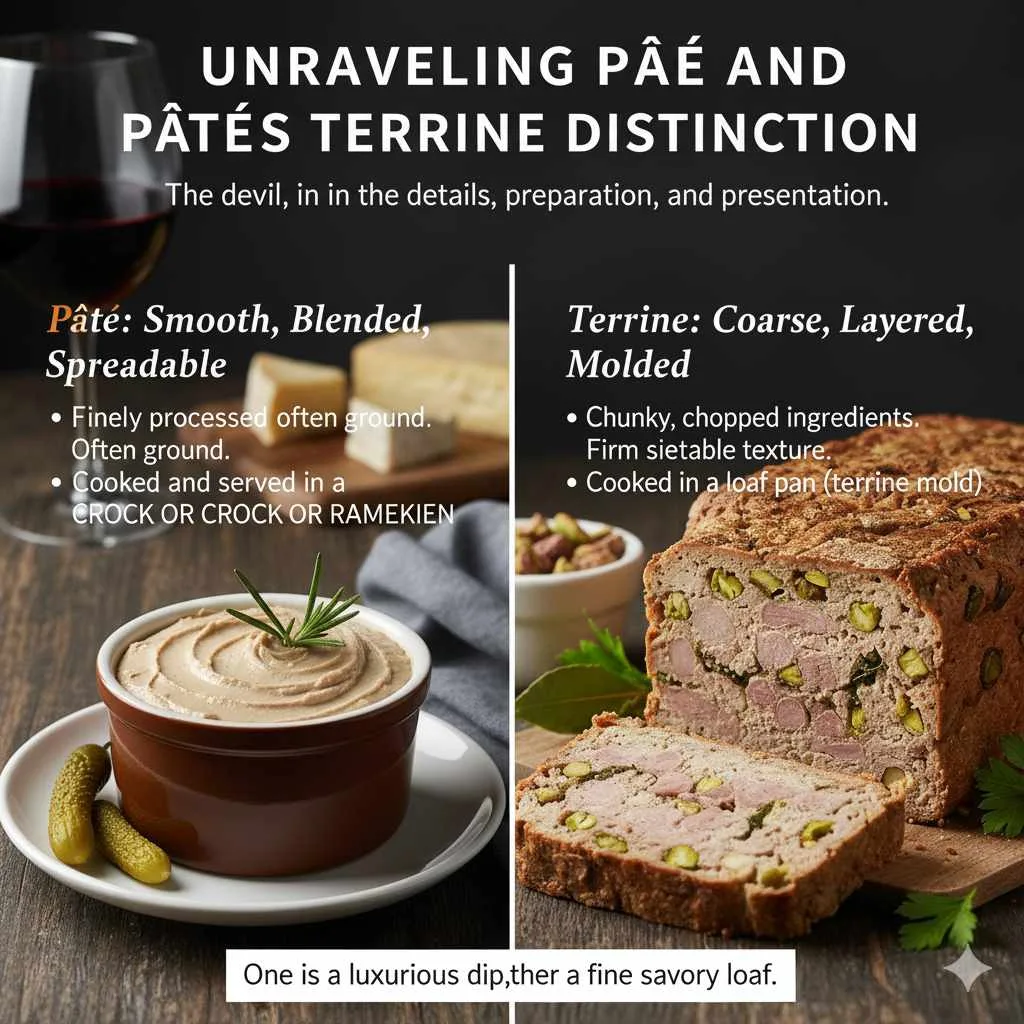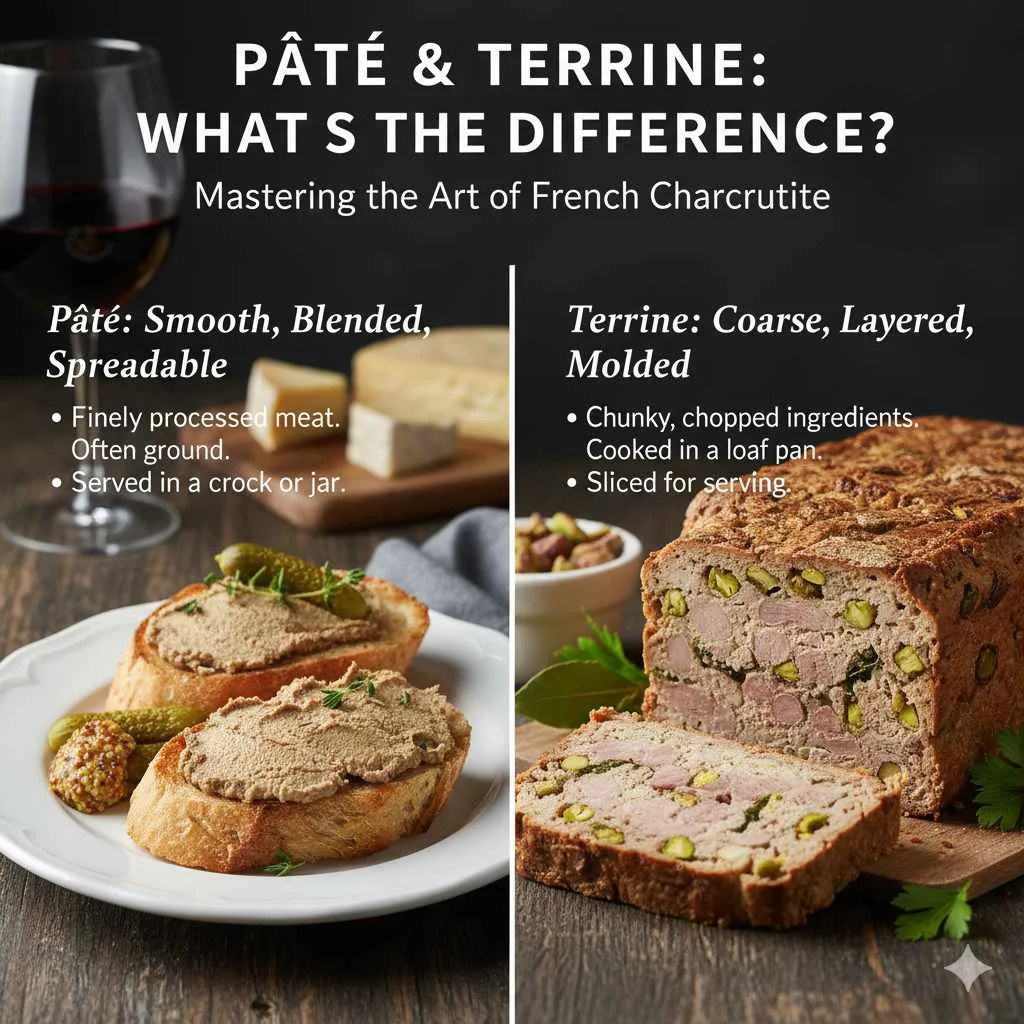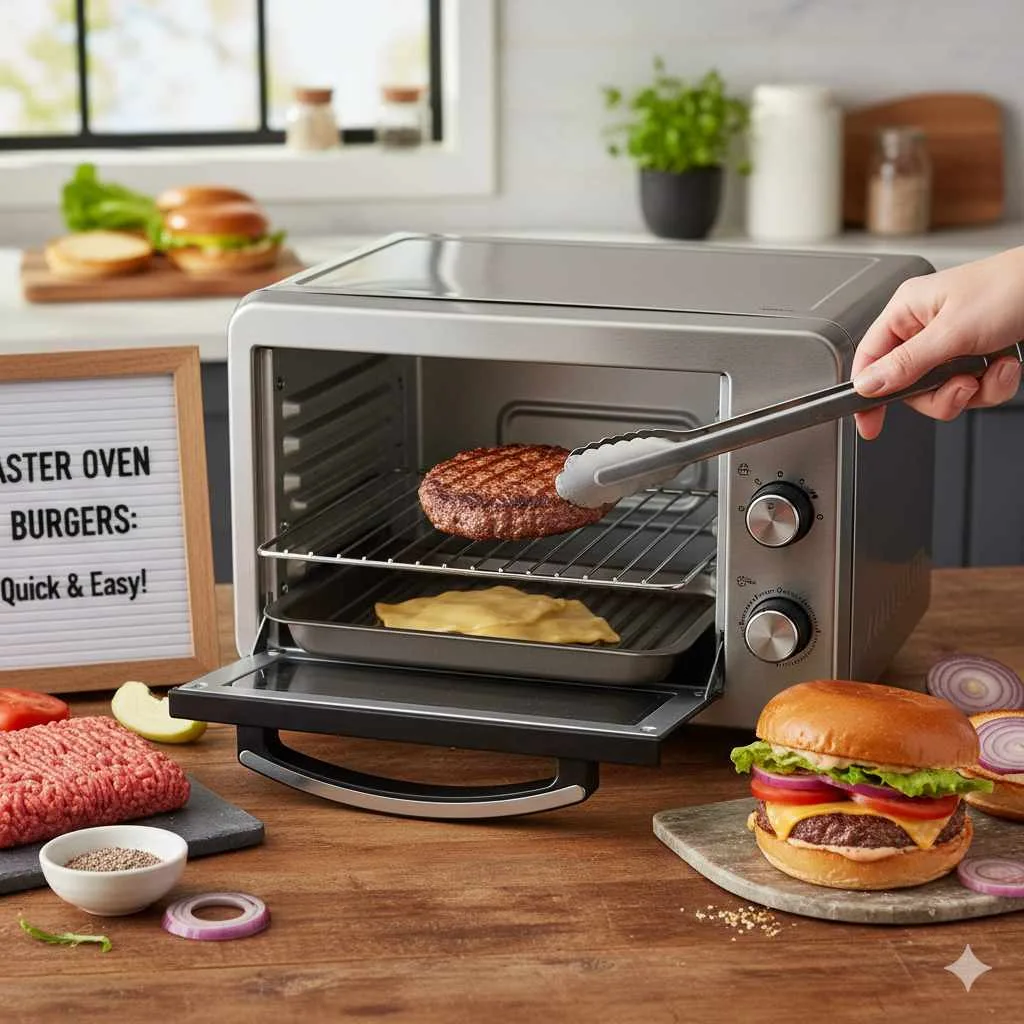Quick Summary: Understanding the pâté and terrine difference is simple: Pâté is a finely ground or pureed mixture, often smoother, while terrine is a coarser mix, usually baked in a loaf-shaped dish with visible ingredients, and both are delicious, slow-cooked, savory spreads or main dishes.
Hello there, lovely home enthusiasts! Arlene here, ready to dive into a culinary topic that often gets mixed up – the delightful world of pâté and terrine. If you’ve ever stared at a charcuterie board, curious about which is which, you’re not alone! These two savory delights, often mistaken for one another, have their own unique charm and preparation methods. But don’t you worry! We’re going to break down the pâté and terrine difference so clearly, you’ll be confidently identifying and even making them yourself. Get ready to expand your knowledge and impress your friends!
Unraveling the Pâté and Terrine Distinction
At first glance, pâté and terrine might seem like distant cousins. They are both slow-cooked, savory dishes, typically made from ground meats, poultry, fish, or vegetables, often bound with fat and served chilled. However, the devil, as they say, is in the details – and in the preparation and presentation!
The most significant differences lie in their texture, the cooking vessel used, and the ingredients incorporated. Think of it like this: a pâté is often smooth and spreadable, a bit like a luxurious dip, while a terrine is usually more structured, with identifiable chunks and layers, more akin to a fine loaf of savory goodness.

What Exactly is Pâté?
Pâté, at its heart, is a preparation of ground meat, fat, and seasonings. The key characteristic of pâté is its texture. It is traditionally processed until it is very fine – often to a smooth, spreadable paste. This can be achieved through a food processor, a meat grinder with a fine die, or even by hand, pounding the ingredients to a pulp.
Pâtés can be made from a wide variety of ingredients. While liver is a common component, giving some pâtés their distinct flavor and color, they can also be made from lean meats, poultry, game, fish, vegetables, and even legumes. The fat content is crucial; it helps create that rich, smooth mouthfeel and prevents the pâté from becoming dry.
Common Pâté Ingredients and Types:
- Liver Pâté: The most classic. Chicken liver, pork liver, or duck liver are frequently used.
- Country Pâté: Often coarser than a smooth liver pâté but still generally ground finer than a terrine. It usually includes pork, sometimes mixed with other meats like veal or game, and often has a rustic, robust flavor.
- Fish Pâté: Made from finely pureed fish, often with cream cheese, butter, herbs, and spices.
- Vegetable Pâté: A vegetarian or vegan option, typically made from puréed vegetables, nuts, seeds, and seasonings.
Pâtés are typically cooked in a mold or a loaf pan, often lined with bacon or fatback to add moisture and flavor, or sometimes baked directly in a bain-marie (a water bath) to ensure even, gentle cooking. Once cooked and cooled, they are often chilled thoroughly, which helps firm them up for slicing or spreading. The final texture can range from incredibly smooth and almost mousse-like (like a forcemeat pâté) to slightly coarser (like some country pâtés).
Delving into Terrines
Now, let’s talk about terrine. The name “terrine” actually refers to the dish it’s cooked in – a deep, rectangular, lid-covered earthenware mold, similar to a loaf pan. While you can use other loaf pans, the traditional terrine mold is key to the name’s origin.
The defining characteristic of a terrine is its texture and the way ingredients are incorporated. Unlike pâté, which is often pureed smooth, a terrine typically features ingredients that are chopped or coarsely ground, allowing for a more varied texture with distinct pieces of meat, fat, vegetables, and herbs visible within the finished product. This coarser texture gives terrines a more rustic and substantial feel.
Key Terrine Characteristics:
- Visible Ingredients: You can usually see the different components – chunks of meat, bits of vegetables, herbs – within the terrine.
- Coarser Texture: Ingredients are chopped or roughly ground, not fully pureed.
- Lining: Terrines are almost always lined with fat (like bacon or lardoons) or sometimes leaves (like cabbage or spinach) to help hold their shape, add moisture, and impart flavor.
- Structured Loaf: The result is a firm, sliceable loaf that holds its shape when cut.
Common ingredients for terrines include pork, duck, game meats, veal, and sometimes combinations with chicken or forcemeat. They also often incorporate vegetables like mushrooms, onions, leeks, and herbs. Like pâté, terrines are slow-cooked, usually in a bain-marie, to ensure they don’t dry out and cook evenly. The cooling and chilling process is vital for setting the terrine, making it firm enough to slice neatly.
Pâté vs. Terrine: A Side-by-Side Comparison
Let’s put these two culinary stars head-to-head to highlight their differences. Visualizing these distinctions can be incredibly helpful when you’re at a specialty store or even planning your own charcuterie creations.
| Feature | Pâté | Terrine |
|---|---|---|
| Texture | Smooth, finely ground, often a paste or mousse-like consistency. | Coarser, with visible chunks of meat, fat, vegetables, or other ingredients. |
| Preparation | Ingredients are finely ground, pureed, or processed to a smooth consistency. | Ingredients are chopped or coarsely ground, retaining a discernible texture. |
| Cooking Vessel | Can be cooked in loaf pans, ramekins, or other molds. | Traditionally cooked in a specific deep, straight-sided earthenware mold called a “terrine,” often with a lid. |
| Appearance | Uniform, consistent color and texture throughout. | Varied appearance with distinct pieces and potential layers of ingredients. |
| Serving Suggestion | Often spread on bread, crackers, or toast. | Typically sliced and served with bread, pickles, or a vinaigrette. |
| Examples | Chicken liver pâté, smooth duck pâté, salmon mousse pâté. | Country terrine, vegetable terrine, duck confit terrine. |
This table offers a quick way to remember the key differences. Don’t forget, these are traditional guidelines, and modern recipes sometimes blur the lines! Some “country pâtés” might have a coarser texture, and some “terrines” might be quite refined. The spirit of the distinction, however, remains focused on the resulting texture and primary cooking method.
The Art of Preparation: How They’re Made
Understanding how pâté and terrine are made can really solidify the difference in your mind. The process, while involving similar ingredients, diverges significantly in the initial treatment of those ingredients and the final texture achieved.
Making Pâté: The Smooth Operator
The journey to a smooth pâté begins with finely processing the main ingredients. This usually involves:
- Grinding/Pureeing: Meats, liver, and fats are typically passed through a fine grinder attachment on a meat grinder or processed extensively in a food processor until they reach a very smooth, homogenous consistency.
- Seasoning and Binding: Herbs, spices, aromatics (like onions, garlic), and often eggs or a binder like breadcrumbs or flour are mixed in. For liver pâtés, butter, and cream are common additions to enhance richness and smoothness.
- Cooking: The mixture is then placed into a mold, often lined with bacon or fatback for moisture and flavor. Pâtés are frequently cooked in a bain-marie (a water bath). This provides gentle, even heat, preventing the mixture from drying out and achieving that desired delicate texture.
- Chilling: After cooking, the pâté is thoroughly chilled, which firms it up and allows the flavors to meld.
Making Terrine: The Robust Loaf
Terrine preparation focuses on maintaining character and texture:
- Chopping/Coarse Grinding: The primary meats and fats are chopped or coarsely ground. This means you’ll still see distinct pieces. Sometimes, a portion of the meat might be pureed to act as a binder for the larger pieces.
- Layering: Ingredients are often layered in the terrine mold. For instance, you might have a base of coarsely ground pork, topped with pieces of duck breast, interspersed with fat, herbs, and vegetables.
- Lining the Mold: This is crucial for terrines. The mold is typically lined with strips of bacon, lardoons, or large fatback slices. These not only add flavor and moisture but also help the terrine hold its shape once removed from the mold.
- Cooking: Like pâté, terrines are almost always cooked in a bain-marie to ensure gentle, even cooking and to prevent the fats from rendering out too quickly.
- Pressing and Chilling: Once cooked, terrines are often pressed down with weights while they cool. This helps to compact the ingredients and create a firm, sliceable loaf. Then, they are thoroughly chilled.
The difference in preparation directly results in the textural contrast we discussed. Pâté is about homogeneity and spreadability, while terrine celebrates the character of its individual components.
Why Both Are Wonderful Additions to Your Table
Regardless of how you classify them, both pâté and terrine are incredibly versatile and offer a fantastic way to elevate any meal or gathering. They are perfect for:
- Appetizers: Served with crusty bread, crostini, cornichons, mustard, and perhaps some fruit preserves, they make for an elegant starter.
- Charcuterie Boards: A staple for any impressive charcuterie spread.
- Picnics and Lunches: Their firm texture makes them ideal for packing and enjoying on the go.
- Light Main Courses: Especially when served with a substantial salad and bread, they can be a satisfying light meal, particularly in warmer months.
The rich flavors and satisfying mouthfeel of these slow-cooked delights are truly something special. They represent a tradition of preserving and preparing food that is both rustic and refined, depending on the specific recipe.
Beyond the Basics: Cooking Terminology
To further illustrate the nuances, let’s touch upon a few related terms you might encounter:
- Forcemeat: This is the term for a mixture of ground or pureed meat, fat, and seasonings used as the base for pâtés and terrines. The fineness of the forcemeat is a key differentiator.
- Rillettes: While not a pâté or terrine, rillettes are a French delicacy of slow-cooked, shredded meat (often pork or duck) that is then packed into small jars or crocks and covered with its own rendered fat. They are typically served at room temperature and are spreadable. Texturally, they are usually looser and more shredded than a pâté or terrine.
- Mousseline: This term refers to an extremely fine, light, and smooth forcemeat, often made with poultry or fish and enriched with cream. A pâté made from a mousseline will be very delicate and airy in texture.
Understanding these terms can help you appreciate the spectrum within this category of foods better. For instance, a mousse-like pâté is essentially using a forcemeat prepared to a degree of fineness that rivals a classic mousse, while a country pâté would use a much coarser forcemeat.
Tips for Serving Your Pâté or Terrine
Serving these delicacies is an art in itself! Here are some tips to make sure you present them beautifully:
- Temperature is Key: Most pâtés and terrines are best served chilled or at cool room temperature. This allows their flavors to be most pronounced and their texture to be firm enough for slicing.
- Sharp Knife: Use a very sharp, thin knife to slice your pâté or terrine. Dipping the knife in hot water can help achieve cleaner cuts, especially with firmer preparations.
- Accompaniments Matter:
- Bread: Toasted baguette slices (crostini), rustic country bread, or even good quality crackers are essential.
- Acidity: Cornichons (small sour gherkins), capers, pickled onions, or a sharp mustard (like Dijon) cut through the richness beautifully.
- Sweetness: A dollop of fig jam, fruit chutney, or a drizzle of honey can offer a delightful contrast.
- Freshness: A simple green salad with a light vinaigrette can balance the plate.
- Presentation: If you’ve made a terrine, unmolding it presents wonderfully. If it’s in a loaf pan, you can serve it directly or invert it onto a platter. For pâtés in ramekins, serving them as is also works well. Garnishing with fresh herbs like parsley or chives adds a lovely visual touch.

FAQs: Your Beginner’s Guide to Pâté and Terrine
Q1: Are pâté and terrine served hot or cold?
Both pâté and terrine are typically served chilled or at cool room temperature. This is because the cooking process renders fats, and chilling allows these fats to solidify, giving the dishes their characteristic firm texture, making them sliceable. Serving them cold also makes their rich flavors more distinct and enjoyable, as opposed to being overwhelming if served warm.
Q2: Can I make pâté or terrine at home?
Absolutely! While it might seem intimidating, making pâté and terrine at home is very achievable, especially with beginner-friendly recipes. Many recipes utilize food processors and standard loaf pans, making the process less daunting. It’s a rewarding way to create something truly special for yourself or for entertaining.
Q3: What’s the difference between a pâté and a liverwurst?
Liverwurst is a type of pâté, specifically one made primarily from liver and often including pork. Pâté is a broader category that can include many ingredients beyond liver, such as poultry, game, or fish, and can also be vegetarian. Liverwurst is generally smoother and more spreadable than many other types of pâté.
Q4: What’s the best way to store leftover pâté or terrine?
Leftover pâté and terrine should be covered tightly with plastic wrap or placed in an airtight container. They will keep in the refrigerator for about 3 to 5 days. For a beautiful finish and to prevent drying, you can pour a thin layer of melted butter or a bit of rendered fat over the surface before refrigerating, especially for terrines. Ensure the container is well-sealed to maintain freshness.
Q5: Are there vegetarian or vegan versions of pâté and terrine?
Yes, there are many delicious vegetarian and vegan options! These are typically made using ingredients like mushrooms, lentils, nuts, seeds, roasted vegetables, and grains. They are seasoned expertly to create rich, savory flavors and binding agents like agar-agar or starches are used to achieve a firm, sliceable consistency. You can find many recipes online using your favorite vegetables and flavor combinations.
Q6: What is a “country style” pâté?
A “country style” pâté is usually a heartier, more rustic version than a smooth, refined pâté. It often contains a mixture of pork, pork liver, and pork fat, with chunks of meat or other ingredients visible, giving it a coarser texture. It’s designed to be robust and flavorful, often seasoned with herbs and spices like thyme, pepper, and sometimes a touch of brandy or cognac. It’s a delicious bridge between a very smooth pâté and a more coarsely textured terrine.
Conclusion: Enjoying Your Culinary Creations
So there you have it! The pâté and terrine difference, demystified. While both are slow-cooked, savory wonders, the key distinctions lie in their texture – smooth and spreadable for pâté, and coarser with visible ingredients for terrine. The vessel they are cooked in also plays a role in their identity. Whether you’re admiring them on a charcuterie board or bravely embarking on your own culinary adventure in the kitchen, understanding these nuances will undoubtedly enhance your appreciation. These preparations are more than just food; they are a taste of tradition and a celebration of flavor that can transform an everyday meal into something truly special. Don’t be afraid to experiment and find your favorite! Happy cooking and even happier eating!








Leave a Reply